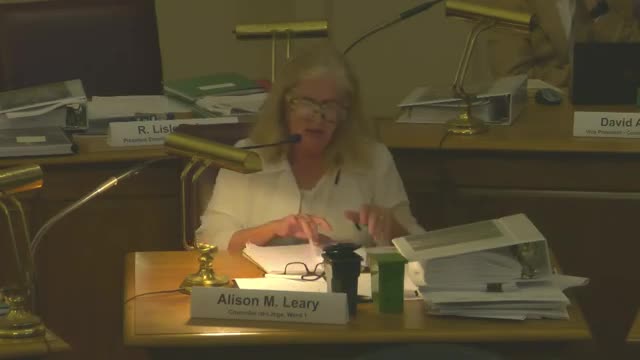Newton Council Discusses Hotel Development and Traffic Concerns for Riverside Project
September 17, 2025 | Newton City, Middlesex County, Massachusetts
This article was created by AI summarizing key points discussed. AI makes mistakes, so for full details and context, please refer to the video of the full meeting. Please report any errors so we can fix them. Report an error »

During the recent Land Use Committee meeting held on September 16, 2025, in Newton City, key discussions centered around the ongoing development projects and their implications for the community. The meeting highlighted concerns regarding the timeline for project completion, environmental impacts, and the integration of commercial spaces within new developments.
One of the primary topics was the anticipated construction timeline, which is projected to span four to five years. This extended period raises questions about the long-term effects on the community and the environment. Councilor Leary expressed curiosity about the timeline, emphasizing the importance of understanding how these developments will unfold over time.
A significant focus was placed on phosphorus reduction strategies as part of the stormwater management design. Rich Holworth from VHB explained that groundwater recharge chambers would be implemented to enhance water quality and mitigate runoff. This approach aims to improve environmental conditions post-development, which is crucial for maintaining local ecosystems.
Councilor Lucas brought attention to the Transportation Demand Management (TDM) strategies, advocating for discounted transit passes to encourage residents and employees to utilize public transportation. This initiative aligns with broader goals of reducing car trips and promoting sustainable commuting options. Lucas also questioned the types of commercial businesses planned for the ground floor of the development, stressing the need for a mix of services that would minimize traffic and enhance community accessibility.
The discussion also touched on the historical context of the site, which has seen various proposed uses over the years, including a hotel and laboratory spaces. Lucas raised concerns about the lack of new ideas for increasing commercial space without significantly increasing traffic. He suggested that incorporating a hotel or senior housing could be viable options, reflecting a need for diverse development that meets community needs.
Lastly, the committee reviewed a fiscal analysis indicating a projected net positive impact of one million dollars from the development. However, questions arose regarding the accuracy of past fiscal analyses, prompting a call for a review of previous projections to ensure accountability and informed decision-making.
Overall, the meeting underscored the complexities of urban development in Newton, balancing environmental sustainability, community needs, and economic viability. As the committee moves forward, the discussions will likely shape the future landscape of the city, with ongoing scrutiny from council members and residents alike.
One of the primary topics was the anticipated construction timeline, which is projected to span four to five years. This extended period raises questions about the long-term effects on the community and the environment. Councilor Leary expressed curiosity about the timeline, emphasizing the importance of understanding how these developments will unfold over time.
A significant focus was placed on phosphorus reduction strategies as part of the stormwater management design. Rich Holworth from VHB explained that groundwater recharge chambers would be implemented to enhance water quality and mitigate runoff. This approach aims to improve environmental conditions post-development, which is crucial for maintaining local ecosystems.
Councilor Lucas brought attention to the Transportation Demand Management (TDM) strategies, advocating for discounted transit passes to encourage residents and employees to utilize public transportation. This initiative aligns with broader goals of reducing car trips and promoting sustainable commuting options. Lucas also questioned the types of commercial businesses planned for the ground floor of the development, stressing the need for a mix of services that would minimize traffic and enhance community accessibility.
The discussion also touched on the historical context of the site, which has seen various proposed uses over the years, including a hotel and laboratory spaces. Lucas raised concerns about the lack of new ideas for increasing commercial space without significantly increasing traffic. He suggested that incorporating a hotel or senior housing could be viable options, reflecting a need for diverse development that meets community needs.
Lastly, the committee reviewed a fiscal analysis indicating a projected net positive impact of one million dollars from the development. However, questions arose regarding the accuracy of past fiscal analyses, prompting a call for a review of previous projections to ensure accountability and informed decision-making.
Overall, the meeting underscored the complexities of urban development in Newton, balancing environmental sustainability, community needs, and economic viability. As the committee moves forward, the discussions will likely shape the future landscape of the city, with ongoing scrutiny from council members and residents alike.
View full meeting
This article is based on a recent meeting—watch the full video and explore the complete transcript for deeper insights into the discussion.
View full meeting
